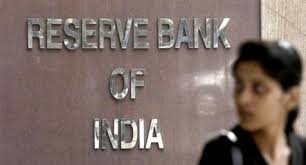RBI Governor Urjit Patel says state bank recap to be supplemented by reforms

Stronger state-run banks will get priority in India’s more than $ 32 billion plan to recapitalise the lenders, Reserve Bank of India (RBI) governor Urjit Patel said on Thursday, adding the programme will accompany broader reforms.
Twenty-one lenders, majority owned by the government, account for more than two thirds of the nation’s banking assets. The lenders also account for the bulk of the record $ 147 billion soured assets in the sector after years of profligate lending, and are a major factor choking new lending.
In October, the government outlined a 2.11 trillion rupee ($ 32.71 billion) recapitalisation plan for state lenders, with 1.35 trillion rupees of it to be financed via recapitalisation bonds that the banks themselves will subscribe to. The banks are also required to raise about 580 billion rupees by selling shares to external investors.
RBI Governor Patel said the central bank was working with the financial services department to determine for each bank the amount of recapitalisation bonds to be placed on its balance sheet and also the amount of external fund-raising.
“Recapitalisation bonds will be front-loaded for banks that have managed their balance sheet strength more prudently and can use the injected capital to lend besides providing for legacy asset losses,” Patel said after the RBI kept its key policy rate unchanged.
Patel warned the other banks would receive government equity contribution based on their “resolve and progress” towards reforms in a significant and timebound manner and become “slim and trim” by implementing better-focused strategies and selling non-core assets.
The financial services department would release details of the package in coming days, Patel said, adding it would ensure that mistakes are not repeated.
“This will be a reform and recap package and not just a recap package so as to ensure that this money is used to strengthen public sector bank balance sheets, and that we don’t sow the seeds of the next boom and bust cycle of lending.”





